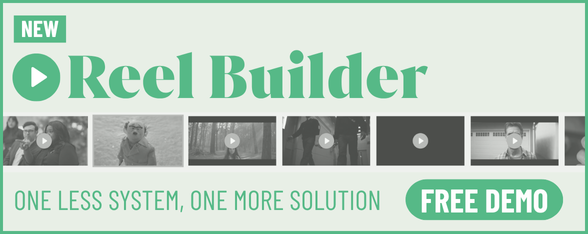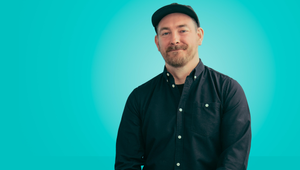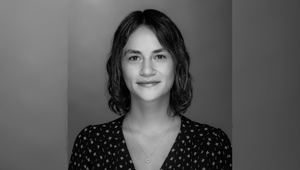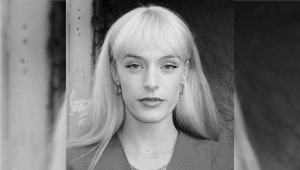
The Directors: Ceci Fletcher

Reared in California’s East Bay, Ceci (pronounced Sess-see), spent her formative years traveling frequently to her mother’s native Brazil. There, her obsession with colors, patterns, and design was born.
Ceci studied painting at Rhode Island School of Design before pursuing a masters in animation at USC. She’s worked for a decade as a designer, illustrator, animator, art director, and now as a lead director.
Ceci’s an expert at teasing out the meaning behind a campaign and finding the perfect sensory combinations to empower a story. She builds bright and beautiful worlds full of life, and always says that if she can get her project to feel sweet and sizzlin’ like Pop Rocks, she’s a happy camper.
A strong communicator and excellent leader, Ceci’s real superpower is how she approaches every project with curiosity, tenacity, and kindness. A magnetic personality, she’s quite possibly the happiest and most sincere person you’ll come across.
In her free-time, she likes browsing at weird flea markets and second-hand shops, especially for beginner paintings and prints, which she loves to examine for the devotion and inspiration of the artist. When she’s not at home with her three bossy cats and one very nice human, you might find her in one of LA’s amazing movie theaters.
Name: Ceci Fletcher
Location: Los Angeles, CA
Repped by/in: Dress Code NY - USA & Canada
LBB> What elements of a script sets one apart from the other and what sort of scripts get you excited to shoot them?
Ceci> The best scripts allow us to show our viewers our story, and those are always the best. It’s not about what’s written – it’s about finding the air between the words to fully encapsulate a fully sensory experience.
Especially when we work in short formats or in the realm of animation, we are distilling the essence of lived experience into concentrated visuals, so it’s all about finding that exquisite fluid expression of our senses.
LBB> How do you approach creating a treatment for a spot?
Ceci> Each treatment is wildly different. Some aspects are beautifully fleshed out by our partners, some are very loosely sketched. Regardless, with each treatment, I mull over all the materials, research the history, and start with where we can pull on a thread of content, give it a particular spin that will support and enhance everything we’ve been given. Beyond everything, my job is to help the piece stand out in the busy landscape of media content while supporting all of the goals of the source content.
Depending on the project, that starting point will always be different, it may be script, or sound, or visuals, but once I find that “spin,” the rest of the treatment comes together quickly.
LBB> If the script is for a brand that you're not familiar with/ don’t have a big affinity with or a market you're new to, how important is it for you to do research and understand that strategic and contextual side of the ad? If it’s important to you, how do you do it?
Ceci> Research is so important! Coming from a background in design, nothing comes together without giving yourself a clear understanding of where a brand is coming from. Your work exists in a dialogue with what has come before, and many brands have a long history/conversation with their fans and followers that precedes what would be my contribution.
Beyond deep internet research of past campaigns, fan sites, and other online materials. If the brand is connected to a product, I make sure I go out and buy that product. For example, if we’re selling peanuts in a bottle, I’ll go out, buy the bottle, feel the weight of it, shake it, sample it. Not only does that trigger so many more ideas for the treatment, but when we proceed with the commercial, I already have a sense of how the product should look and feel before I ever see a brand guide.
LBB> For you, what is the most important working relationship for a director to have with another person in making an ad? And why?
Ceci> When it comes to the directing role, I would say my producer. The producer is the thread connecting the vision of the piece to all of the financial, staffing, and agency/client communication branches of the project. I work collaboratively with my producers to help us find the ideal team size and the right staff for the project to succeed.
Any producer working with me knows I’m a highly organised and collaborative person, but the job itself hinges on the producer’s ability to work as an intermediary for all of these different branches. I rely on my producer to be my partner and fellow advocate for the quality of the project when building an ad.
That said, I obviously think every single person is essential when making an ad. We work in small, highly efficient teams – there isn’t really excess.
LBB> What type of work are you most passionate about - is there a particular genre or subject matter or style you are most drawn to?
Ceci> I would say I am a very curious, colourful, and energetic person. I love bright, vivid stories and experiences. I enjoy working in both animated and live action, and get super excited when I can combine elements and styles into visually distinct looks that pop off the screen.
Beyond any overarching aesthetics, I love a project that engages my curiosity. Challenging subject matter or a unique visual/technical challenge will always light my fire!
LBB> What misconception about you or your work do you most often encounter and why is it wrong?
Ceci> I’m a cheerful person, and in general extremely positive. This does not mean that I let things go, or that I do not hold my teams or my projects to the highest standard of excellence. I work extremely long hours preparing for every job to help set up each team member for success.
I fight to find our most efficient workflows and knock down any barriers of communication because I think our team members make the best possible product when they understand the direction and needs of a project really clearly. We don’t need to exhaust a team to get the most quality work out of them. A director isn’t anything without the team they work with, but the team will not get anywhere without the director setting the tone.
Each job I run is about positive, collaborative, critical engagement from our entire team. I encourage every team member to speak to their expertise, and then I weigh in decisively when the call needs to be made. By setting this leadership tone with my teams, I find the best outcomes and the best end-product.
When I started in the industry, I experienced a lot of top-down, heavily didactic leadership style from project leads. While these techniques seemed to work fine in the (mostly homogenous) teams that existed back then, they never worked for me. It took me time to find this particular mix of collaboration and decisive clarification, but it gets great results across a diverse group of artists.
LBB> What’s the craziest problem you’ve come across in the course of a production – and how did you solve it?
Ceci> I had a simple prop-on-talent’s-face that was incorrectly shot on set once, with markers placed over the talent’s eyes and later there was a client request to reveal the eyes once we were in post (with no understanding that covered eyes meant no eyes existed). We found alternate, prop-free takes and patched in the eyes. It was totally off the cuff and unplanned but came out seamless and amazing (and didn’t break the bank).
LBB> How do you strike the balance between being open/collaborative with the agency and brand client while also protecting the idea?
Ceci> A lot of this is about establishing good communication throughout an entire job. When I pitch my projects, from the initial phase all through production, brand awareness is a key aspect of the conversation. When there are issues or questions with the creativity or artistic nature of our project, I often redirect our focus on how the artistic aspect will be a benefit to the project overall.
As a creative, the art is everything to me, but to my agency and branding partners, there is a much bigger picture. Good directing is understanding where your partners are coming from and what they need to get from the project (beyond the beautiful piece). By aligning our creative with the overarching brand goals, we can more easily find common ground and get the piece to where it needs to be.
LBB> What are your thoughts on opening up the production world to a more diverse pool of talent? Are you open to mentoring and apprenticeships on set?
Ceci> This is HUGE for me. For most of my career, I had little say in opening the production world up for more diversity. Now that I can select staff for teams, I always examine my list not just for the best talent, but to see that we’re aiming to represent a more equal ratio of gender and more diverse backgrounds.
As a female director in a more male-dominated field, I found it hard in the early days to find leadership techniques that worked for me. I would emulate my peers (who were mostly male) and find that most of their styles or tricks did not yield the same results.
As a director, you must be decisive. The choice lies with you. If you waver, you hold up the job and the project loses focus. That said, that doesn’t mean you have to stick to or emulate the exact styles you see around you. If you are a female and/or minority director, some of the techniques you see in action simply will not work for you because you don’t fit the old stereotype of what a director looks or sounds like. It is essential we bring more diverse voices into leadership because we will learn the style and techniques that work for their voices (and pass that learning on to others).
Diverse directing styles yield different work environments, which in turn leads to more innovation– seems like a pretty fantastic way to grow an industry to me!
And lastly, I rely on Dress Code when it comes to the internship/mentorship programs, but I actively participate in them when they bring in young talent to mentor.
LBB> How do you feel the pandemic is going to influence the way you work into the longer term? Have you picked up new habits that you feel will stick around for a long time?
Ceci> Remote workflows have been revolutionizing our field in the past few years. Since the pandemic, I feel like our projects have truly globalized, and we are looking for and sourcing the best possible talent for our jobs. We’ve also become better at being productive in remote setups, and found so many techniques to keep a team focused and coordinated no matter the number of miles between us.
LBB> Your work is now presented in so many different formats - to what extent do you keep each in mind while you're working (and, equally, to what degree is it possible to do so)?
Ceci> It’s nice to have a “hero format” in mind for a project (the format I consider signature for the piece). When it comes to planning for 16:9 and social deliveries, I tend to look at my compositions in a square format, with a plus-shaped grid showing us the composition of most formats. It’s never perfectly seamless, but I like to plan for the amount of material we’ll need to cover us across the board.
LBB> What’s your relationship with new technology and, if at all, how do you incorporate future-facing tech into your work (e.g. virtual production, interactive storytelling, AI/data-driven visuals etc)?
Ceci> I love future-facing tech and incorporating new workflows. So much of those processes are already incorporating into our software and thinking across the field. That said, from a creative (non-technical) standpoint, incorporation without consideration is gimmicky and ages poorly.
As directors, our job is to maintain the vision of a job and not get seduced away from the overarching goals of the project. All is well and exciting with new technologies as long as it supports the vision.
From a technical perspective, I think AI-driven tools will completely overtake our software and production workflows over the next few years. We’ll see changes from the highly practical (AI-driven rotoscoping and set extension) to the more creative (iterating illustrated elements in established design styles), and beyond. It will make some things faster, and some teams smaller, but we still need our top-tier talents to guide the way!















